- Importance of Pre-Sowing Treatment
- Selecting High-Quality Tomato Seeds
- Cleaning and Disinfecting Seedling Trays
- Materials Needed:
- Steps to Clean and Disinfect Seedling Trays:
- Seed Priming for Enhanced Germination
- Seed Treatment for Disease Prevention
- 1. Seed Disinfection
- 2. Hot Water Treatment
- 3. Seed Priming
- 4. Biological Seed Treatments
- 5. Fungicide Seed Treatments
- 6. Proper Seed Storage
- Protecting Seedlings from Fungal Infections
- 1. Start with Disease-Free Seeds
- 2. Sterilize the Seed Starting Mix
- 3. Provide Adequate Air Circulation
- 4. Avoid Overwatering
- 5. Use Fungicides
- Using Organic Solutions for Pest Control
- 1. Neem Oil
- 2. Diatomaceous Earth
- 3. Garlic Spray
- 4. Companion Planting
- 5. Beneficial Insects
- Post-Treatment Care for Healthy Seedlings
- 1. Transplanting
- 2. Watering
- 3. Lighting
- 4. Temperature and Humidity
- 5. Fertilizing
- 6. Disease Prevention
- 7. Hardening Off
- 8. Transplanting to the Garden
- “Question-Answer”
- Why is it important to ensure disease-free tomato seedlings?
- What are some common diseases that affect tomato seedlings?
- What is pre-sowing treatment?
- How to treat tomato seeds before sowing?
- How to sterilize soil before sowing tomato seeds?
- Are there any disease-resistant varieties of tomatoes available?
- “Video” How to Prevent Control Identify Early Tomato Blight SIX Ways
Tomatoes are one of the most popular and widely grown vegetables in the world. However, growing healthy and disease-free tomato seedlings can be a challenge for many gardeners. Tomato plants are susceptible to a variety of diseases, including fungal infections, bacterial wilt, and viral infections. These diseases can significantly impact the health and productivity of tomato plants, leading to stunted growth, reduced fruit production, and even plant death.
One effective way to ensure disease-free tomato seedlings is through pre-sowing treatment. Pre-sowing treatment involves various techniques and practices that help prevent the onset and spread of diseases in tomato seedlings. By taking the time to properly treat tomato seeds before sowing, gardeners can greatly reduce the risk of disease and increase the chances of producing healthy and robust tomato plants.
One important step in pre-sowing treatment is seed sterilization. This process helps eliminate any pathogens or disease-causing organisms that may be present on the seeds. One common method is to soak the tomato seeds in a solution of hydrogen peroxide or bleach for a short period of time. This helps kill any bacteria or fungi that may be on the seed’s surface. After sterilization, it is important to rinse the seeds thoroughly and allow them to dry completely before sowing.
Another key aspect of pre-sowing treatment is seed conditioning. This involves priming the seeds to improve germination and enhance their overall health and vigor. Seed conditioning can be done by soaking the seeds in a solution of water and a plant hormone called gibberellic acid. This helps stimulate the seeds to break dormancy and encourages faster and more uniform germination. Seeds can also be treated with beneficial microorganisms, such as mycorrhizal fungi, which can enhance the plant’s ability to absorb nutrients and protect against disease.
In addition to seed sterilization and conditioning, it is also important to provide the tomato seedlings with optimal growing conditions. This includes using clean and sterilized seed trays or pots, using high-quality and well-draining potting soil, and providing adequate water and light. Regular monitoring and inspection of the seedlings for any signs of disease or pest infestation is also crucial.
By following these pre-sowing treatment practices, gardeners can significantly increase the likelihood of producing disease-free tomato seedlings. Creating a healthy and disease-free start for tomato plants is essential for maximizing their growth and productivity, and ultimately enjoying a successful and abundant tomato harvest.
Importance of Pre-Sowing Treatment
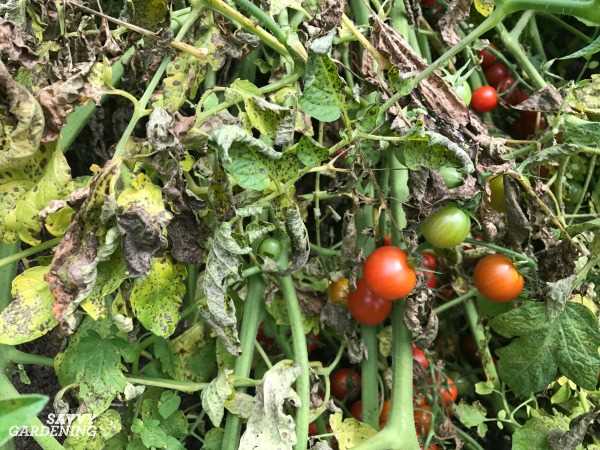
Pre-sowing treatment is an essential step in ensuring disease-free tomato seedlings. This process involves treating the seeds and seedlings before planting to eliminate any potential diseases or pests that could affect the growth and health of the plants.
There are several reasons why pre-sowing treatment is important:
- Disease prevention: Pre-sowing treatment helps to prevent the transmission of diseases from the seeds to the seedlings. This is crucial because diseases can weaken the plants, reduce their yield, and even cause death.
- Pest control: Treating the seeds and seedlings before sowing helps to control or eliminate pests that may attack the plants. Pests such as aphids, mites, and fungus gnats can damage the leaves, stems, and fruits, leading to poor plant growth and reduced productivity.
- Increase germination rate: Certain pre-sowing treatments, such as scarification and stratification, can help to improve the germination rate of tomato seeds. This means a higher percentage of seeds will successfully sprout and develop into healthy seedlings.
- Uniform growth: By treating the seeds before sowing, you can ensure more uniform growth in the seedlings. Treating the seeds eliminates any potential variability in terms of disease resistance and growth potential, resulting in a more consistent plant population.
- Enhance plant vigor: Pre-sowing treatment can enhance the overall vigor and health of tomato seedlings. By eliminating diseases and pests, the plants are able to divert more energy towards growth and development, resulting in stronger and more productive plants.
Overall, pre-sowing treatment plays a crucial role in producing disease-free tomato seedlings. It helps prevent diseases, control pests, improve germination rate, promote uniform growth, and enhance plant vigor. By implementing proper pre-sowing treatment strategies, you can significantly increase the chances of success in your tomato crop and enjoy a healthy and abundant harvest.
Selecting High-Quality Tomato Seeds
Choosing the right tomato seeds is crucial for ensuring disease-free and vigorous tomato seedlings. Here are some important points to consider when selecting high-quality tomato seeds:
- Seed Suppliers: Purchase tomato seeds from reputable suppliers or certified seed companies to ensure quality and reliability.
- Heirloom vs. Hybrid: Decide whether you prefer heirloom or hybrid tomato varieties. Heirloom varieties are open-pollinated and have been passed down for generations, while hybrids are created by crossbreeding different varieties.
- Disease Resistance: Look for tomato varieties that are resistant to common diseases in your region, such as fusarium wilt, verticillium wilt, or tomato mosaic virus. This can help prevent the loss of crops due to diseases.
- Growing Conditions: Consider the specific growing conditions you have, such as the amount of sunlight, soil type, and space available. Choose tomato varieties that are well-suited to your growing conditions for optimal growth and productivity.
- Plant Type: Determine whether you prefer determinate or indeterminate tomato plants. Determinate varieties are compact and produce fruit all at once, making them suitable for smaller spaces or container gardening. Indeterminate varieties are vining plants that continue to grow and produce fruit throughout the season.
It’s important to pay attention to these factors when selecting tomato seeds to ensure you have healthy and disease-resistant seedlings. Taking the time to choose the right seeds can greatly improve the success of your tomato plants and maximize your harvest.
Cleaning and Disinfecting Seedling Trays
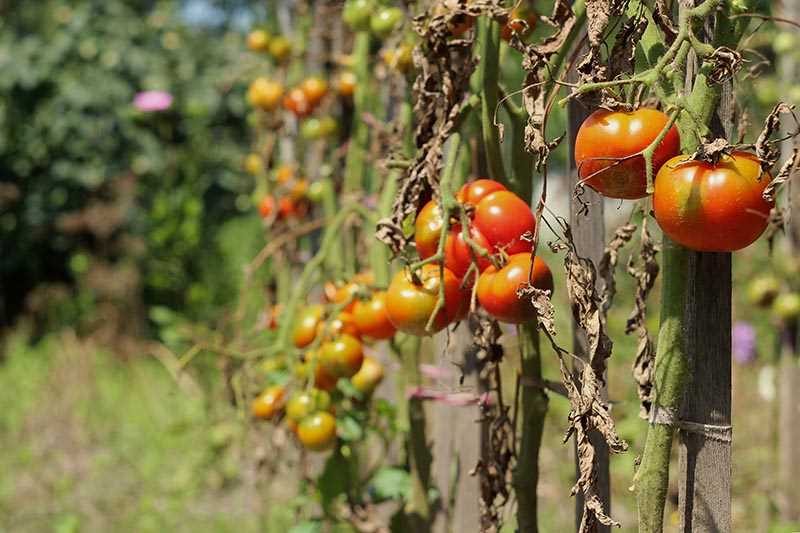
Properly cleaning and disinfecting the seedling trays before sowing the tomato seeds is essential to ensure disease-free seedlings. By eliminating any potential pathogens or pests, you can improve the chances of healthy seedling growth and reduce the risk of plant diseases.
Materials Needed:
- Seedling trays
- Water source
- Mild dish soap
- Bleach or hydrogen peroxide
- Clean sponge or cloth
- Plastic gloves
Steps to Clean and Disinfect Seedling Trays:
- Remove any soil or debris: Empty the old soil from the seedling trays and remove any remaining debris or plant material.
- Wash the trays: Fill a sink or basin with warm water and add a small amount of mild dish soap. Submerge the trays in the soapy water and use a clean sponge or cloth to scrub away any dirt or residue. Rinse the trays thoroughly with clean water to remove any soapy residue.
- Disinfect the trays: Prepare a disinfecting solution using either bleach or hydrogen peroxide. Mix 1 part bleach or hydrogen peroxide with 9 parts water in a clean bucket or basin. Put on the plastic gloves to protect your hands, and soak the trays in the disinfectant solution for at least 10 minutes.
- Rinse the trays: After the disinfection process, remove the trays from the solution and rinse them thoroughly with clean water. Ensure that all traces of the disinfectant are removed.
- Dry the trays: Place the trays on a clean surface or rack and allow them to air dry completely before using them for sowing tomato seeds. Make sure there is no moisture left, as it can promote the growth of fungi or other pathogens.
By following these simple steps, you can effectively clean and disinfect your seedling trays, reducing the risk of disease and promoting healthy tomato seedling growth. Remember to clean and disinfect the trays after each use to avoid the build-up of pathogens and ensure a disease-free growing environment for your tomato seedlings.
Seed Priming for Enhanced Germination
Seed priming is a pre-sowing treatment that involves soaking the seeds in water or a solution to enhance the germination process. This technique is commonly used to improve seed performance by stimulating the metabolic activities of the embryo and breaking seed dormancy.
Advantages of Seed Priming:
- Enhanced germination rate
- Faster germination
- Uniform germination
- Improved seedling establishment
- Better crop productivity
Seed Priming Methods:
- Hydropriming: Seeds are soaked in water for a specific duration, usually 12 to 24 hours, to increase water uptake and activate enzymes.
- Osmopriming: Seeds are soaked in an osmotic solution (e.g., polyethylene glycol) to enhance water absorption and promote germination under stressful conditions.
- Priming with bio-stimulants: Seeds are treated with biologically active substances, such as plant hormones or microbial agents, to enhance seed germination and early growth.
The Seed Priming Process:
- Clean the seeds to remove any dirt or debris.
- Select the appropriate priming method based on the nature of the seeds and desired outcomes.
- Soak the seeds in the priming solution for the recommended duration.
- After priming, thoroughly drain the seeds to remove excess water.
- Sow the primed seeds immediately or store them in a cool, dry place for future use.
Factors to Consider:
| Factor | Consideration |
|---|---|
| Seed viability | Use high-quality seeds with good germination potential for priming. |
| Priming duration | Follow the recommended soaking time for each type of seed. |
| Priming solution | Choose the appropriate solution based on the seed’s requirements. |
| Temperature | Maintain the optimal temperature for seed priming. |
| Storage conditions | Store primed seeds in a cool, dry place away from direct sunlight. |
Note: While seed priming can significantly enhance germination and seedling establishment, it is essential to ensure that the priming process is conducted properly to avoid over-soaking or causing damage to the seeds. It is always recommended to follow the specific guidelines provided for each type of seed.
Seed Treatment for Disease Prevention
Pre-sowing treatment of tomato seeds is crucial for preventing diseases and ensuring healthy seedlings. By treating the seeds before planting, you can minimize the risks of fungal and bacterial infections, promote seed germination, and improve overall plant health.
1. Seed Disinfection
Before sowing, it is recommended to disinfect tomato seeds to eliminate any potential pathogens that may be present on the seed surface. This can be done by soaking the seeds in a mild bleach solution or using commercial seed disinfectants. Ensure that the seeds are well-covered in the solution for the recommended time, usually around 15-20 minutes, and then rinse them thoroughly with clean water.
2. Hot Water Treatment
Some diseases, such as bacterial canker and bacterial spot, can be controlled through hot water treatment. This method involves immersing the seeds in hot water at a specific temperature and duration to kill the pathogens without damaging the seeds. The recommended temperature and time may vary depending on the type of disease, so it is essential to follow the instructions carefully.
3. Seed Priming
Seed priming is a technique that involves pre-soaking the seeds in a nutrient solution or water to promote faster and more uniform germination. This method can also contribute to disease prevention by enhancing seed vigor and strengthening the seedlings’ defenses against pathogens. After priming, the seeds should be dried before sowing to avoid excessive moisture and potential fungal growth.
4. Biological Seed Treatments
Using biological seed treatments can provide long-term protection against diseases. These treatments involve applying beneficial microorganisms, such as Trichoderma or Bacillus species, to the seed surface. These microorganisms can colonize the seed and protect it from pathogens by outcompeting and antagonizing them. Commercial biocontrol products are available for this purpose and can be easily applied according to the manufacturer’s instructions.
5. Fungicide Seed Treatments
In cases where severe diseases are a concern, fungicide seed treatments can be utilized. These treatments involve applying fungicides to the seed to prevent seed-borne diseases and protect the emerging seedlings. It is essential to choose the appropriate fungicide for the specific pathogens you want to control. Always follow the manufacturer’s recommendations regarding the proper dosage and application method.
6. Proper Seed Storage
After treatment, it is crucial to store the tomato seeds properly to maintain their viability and prevent disease development. Store the treated seeds in a cool, dry place in airtight containers or seed packets. Avoid exposing them to high temperatures, humidity, and direct sunlight, as these conditions can reduce seed quality and increase the risk of disease.
By following these seed treatment practices, you can significantly reduce the risk of diseases in your tomato seedlings and ensure a healthier and more productive crop.
Protecting Seedlings from Fungal Infections
Fungal infections can be a major threat to the health of tomato seedlings. These infections can cause damping-off, leaf spots, and other diseases that can weaken or kill the young plants. To ensure disease-free tomato seedlings, it is important to take preventive measures to protect them from fungal infections.
1. Start with Disease-Free Seeds
Using disease-free seeds is the first step in preventing fungal infections in tomato seedlings. Buy seeds from reputable suppliers who offer seeds that have been tested and certified to be free of fungal diseases. Avoid saving seeds from infected plants, as they may harbor diseases that can be passed on to the next generation.
2. Sterilize the Seed Starting Mix
Fungal spores can be present in the seed starting mix, so it is essential to sterilize it before sowing the seeds. This can be done by moistening the mix and heating it in an oven at 180°F (82°C) for about 30 minutes. Sterilizing the mix will kill any existing fungal spores and reduce the risk of seedling infections.
3. Provide Adequate Air Circulation
Poor air circulation can create a favorable environment for fungal growth. Make sure to provide adequate ventilation and avoid overcrowding the seedlings. Use a fan or open a window to allow fresh air to circulate around the seedlings. This will help prevent the build-up of moisture that can promote fungal infections.
4. Avoid Overwatering
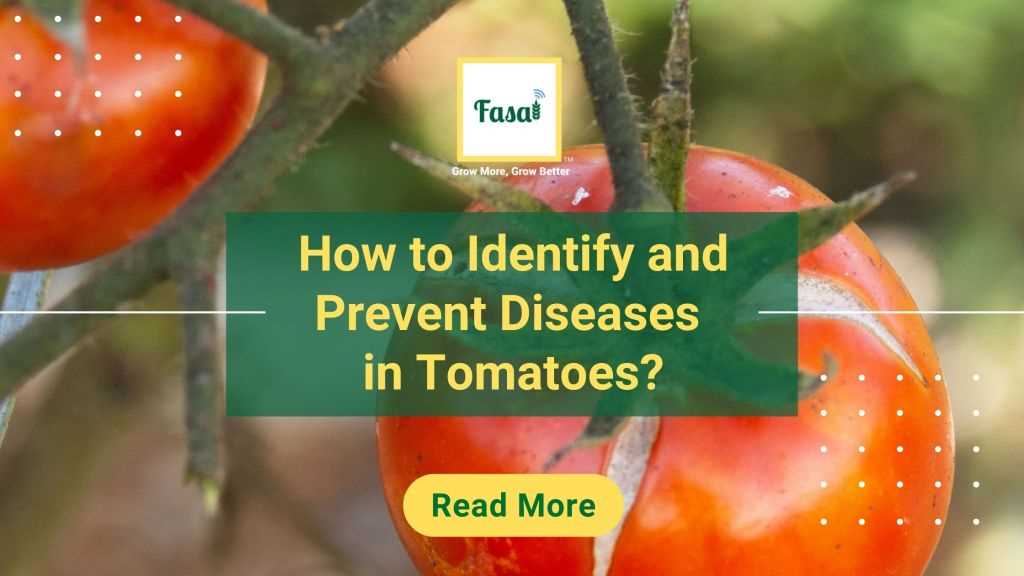
Overwatering can create a damp environment that is ideal for fungal growth. Water the seedlings sparingly and ensure that the excess water can drain away. Use well-draining pots or trays and allow the soil to dry out slightly between watering. A moisture meter can help monitor the soil moisture levels and prevent overwatering.
5. Use Fungicides
In some cases, using fungicides may be necessary to control fungal infections. Select a fungicide that is approved for use on tomato seedlings and follow the instructions on the label for application. Be cautious when using fungicides and ensure proper safety precautions are followed to protect yourself and the environment.
By implementing these measures, you can significantly reduce the risk of fungal infections in your tomato seedlings and increase their chances of healthy growth. Remember to monitor the seedlings regularly for any signs of disease and take prompt action if you notice any symptoms. Prevention and early intervention are key to keeping your tomato seedlings disease-free.
Using Organic Solutions for Pest Control
Pests are a common problem that can severely affect the health and productivity of tomato seedlings. However, there are several organic solutions that can effectively control pests without the use of harmful chemicals. These organic pest control methods are not only safe for humans and the environment, but also help to maintain the overall balance of the ecosystem.
1. Neem Oil
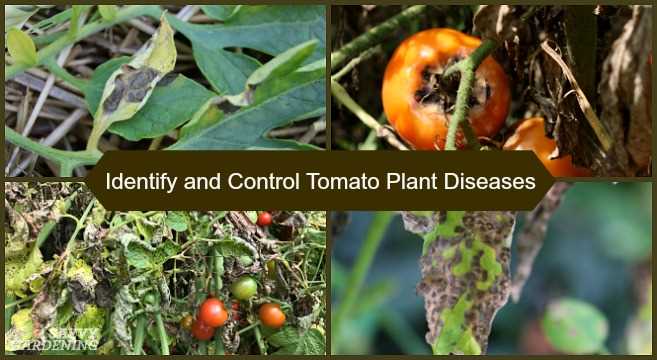
Neem oil is a natural insecticide that can be used to control a wide range of pests, including aphids, spider mites, and whiteflies. The active ingredients in neem oil disrupt the feeding and reproductive processes of these pests, ultimately leading to their demise. To use neem oil, simply dilute it with water according to the manufacturer’s instructions and spray it onto the tomato seedlings.
2. Diatomaceous Earth
Diatomaceous earth is a fine powder made from the fossilized remains of algae. When insects come into contact with diatomaceous earth, it absorbs the oils and fats from their exoskeletons, causing them to dehydrate and die. To use diatomaceous earth, sprinkle a thin layer around the base of the tomato seedlings, making sure to cover the soil surface as well.
3. Garlic Spray
Garlic has natural insecticidal properties and is effective against a variety of pests, including aphids, caterpillars, and leafhoppers. To make a garlic spray, crush several cloves of garlic and steep them in water for a few hours. Strain the mixture and dilute it with water before spraying it onto the tomato seedlings. This spray is also useful in deterring pests from the area.
4. Companion Planting
Companion planting involves growing certain plants near tomato seedlings that repel or deter pests. For example, planting marigolds near tomato seedlings can help repel aphids and nematodes. Similarly, planting basil near tomato seedlings can repel whiteflies and tomato hornworms. This natural pest control method is not only effective but also adds beauty to the garden.
5. Beneficial Insects
Introducing beneficial insects into the garden can help control pests naturally. Ladybugs, lacewings, and parasitic wasps are all examples of beneficial insects that prey on pests such as aphids and caterpillars. These insects can be purchased from garden centers or online and released into the garden to establish a natural balance.
By employing these organic pest control methods, growers can ensure disease-free tomato seedlings without compromising the health of the environment or human well-being. Regular monitoring and early detection of pests are also crucial to prevent infestations and maintain the overall health of tomato seedlings.
Post-Treatment Care for Healthy Seedlings
1. Transplanting
Once the seedlings have undergone the pre-sowing treatment, it is time to transplant them into individual pots or seedling trays. Transplanting should be done carefully to avoid damaging the roots.
2. Watering
Water the seedlings regularly to keep the soil moist, but avoid overwatering as it can lead to the development of diseases such as damping off. Watering should be done from the bottom to prevent water from splashing onto the foliage.
3. Lighting
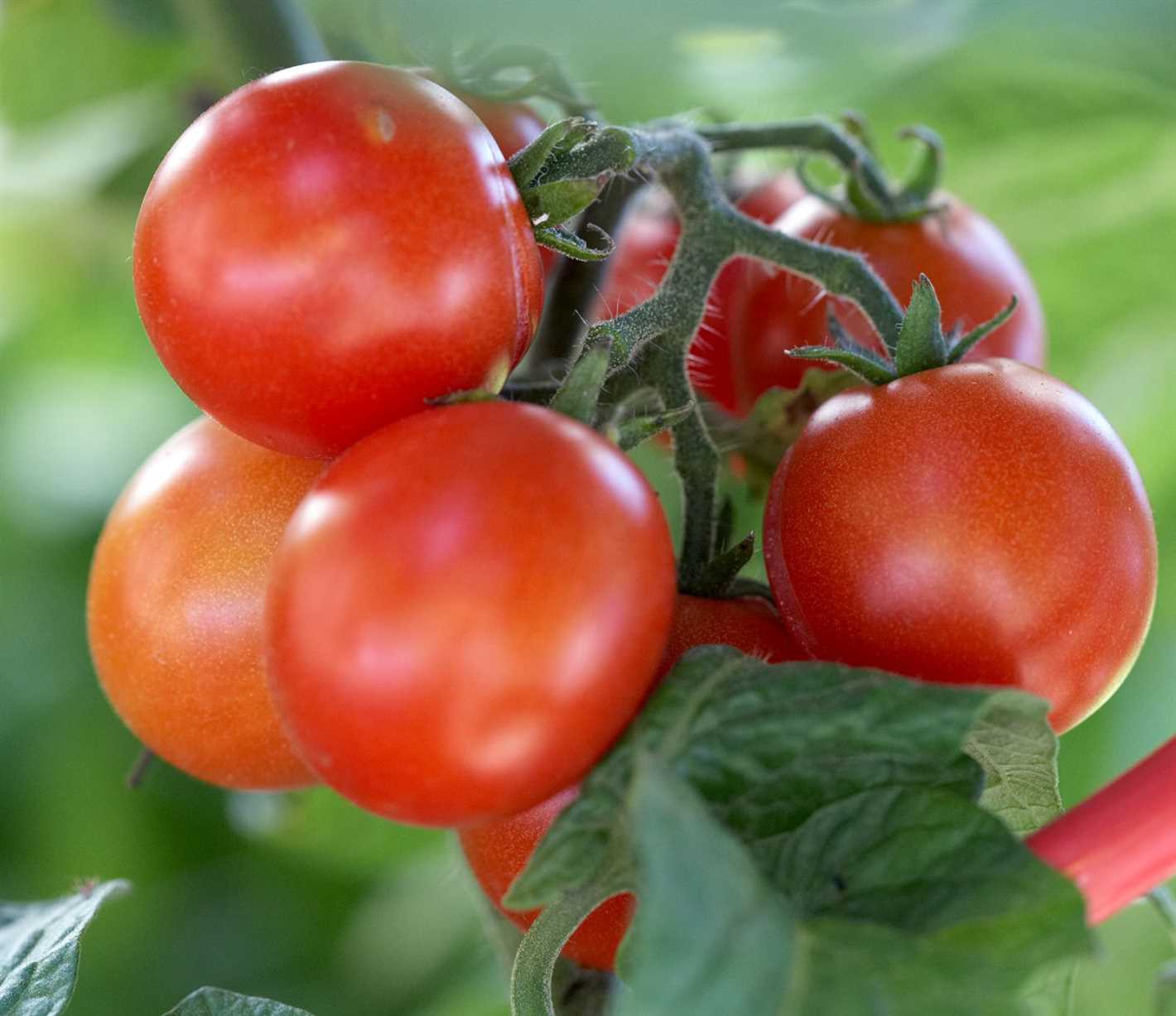
Place the seedlings in a location with ample natural light. If natural light is insufficient, use fluorescent lights to provide supplementary lighting. Maintain a light cycle of 12-14 hours a day to ensure proper growth.
4. Temperature and Humidity
Maintain a temperature of around 70-75°F (21-24°C) during the day and slightly cooler at night. Avoid extreme temperature fluctuations as it can stress the seedlings. Also, maintain a humidity level of around 50-70% to prevent drying out.
5. Fertilizing
After the seedlings have developed their first true leaves, begin fertilizing them with a balanced liquid fertilizer. Dilute the fertilizer according to the manufacturer’s instructions and apply it to the soil around the seedlings once a week.
6. Disease Prevention
Continue monitoring the seedlings for any signs of disease. Remove any infected leaves or plants immediately to prevent the spread of disease. It is also a good practice to sterilize the tools and containers to prevent cross-contamination.
7. Hardening Off
Gradually expose the seedlings to outdoor conditions a week or two before transplanting them into the garden. Start by placing them outside for a few hours each day, gradually increasing the exposure over time. This process will acclimate the seedlings to the outdoor environment.
8. Transplanting to the Garden
When the seedlings have become strong and healthy, and all risk of frost has passed, they can be transplanted into the garden. Dig a hole slightly larger than the root ball and place the seedling in, making sure not to bury the stem too deep. Water the seedlings after transplanting.
By following these post-treatment care steps, you can ensure the health and vitality of your tomato seedlings, giving them the best start for a thriving garden.
“Question-Answer”
Why is it important to ensure disease-free tomato seedlings?
Ensuring disease-free tomato seedlings is important because diseases can significantly reduce the yield and quality of the tomatoes. It helps to prevent the spread of diseases to other plants in the garden as well.
What are some common diseases that affect tomato seedlings?
Some common diseases that affect tomato seedlings are damping off, early blight, late blight, and fungal infections like powdery mildew. These diseases can cause wilting, yellowing of leaves, and rotting of fruits.
What is pre-sowing treatment?
Pre-sowing treatment refers to the various measures taken before sowing tomato seeds to ensure disease-free seedlings. It includes seed treatment, soil sterilization, and using disease-resistant varieties.
How to treat tomato seeds before sowing?
Tomato seeds can be treated by soaking them in a diluted bleach solution for a few minutes to kill any potential pathogens on the seed surface. After soaking, the seeds should be rinsed with water and dried before sowing.
How to sterilize soil before sowing tomato seeds?
Soil can be sterilized by baking it in the oven at a temperature of 180-200 degrees Fahrenheit for 30 minutes. This helps to kill any disease-causing organisms present in the soil.
Are there any disease-resistant varieties of tomatoes available?
Yes, there are several disease-resistant varieties of tomatoes available in the market. These varieties have been bred to have resistance against common tomato diseases, which reduces the need for chemical treatments and increases the chances of disease-free seedlings.







